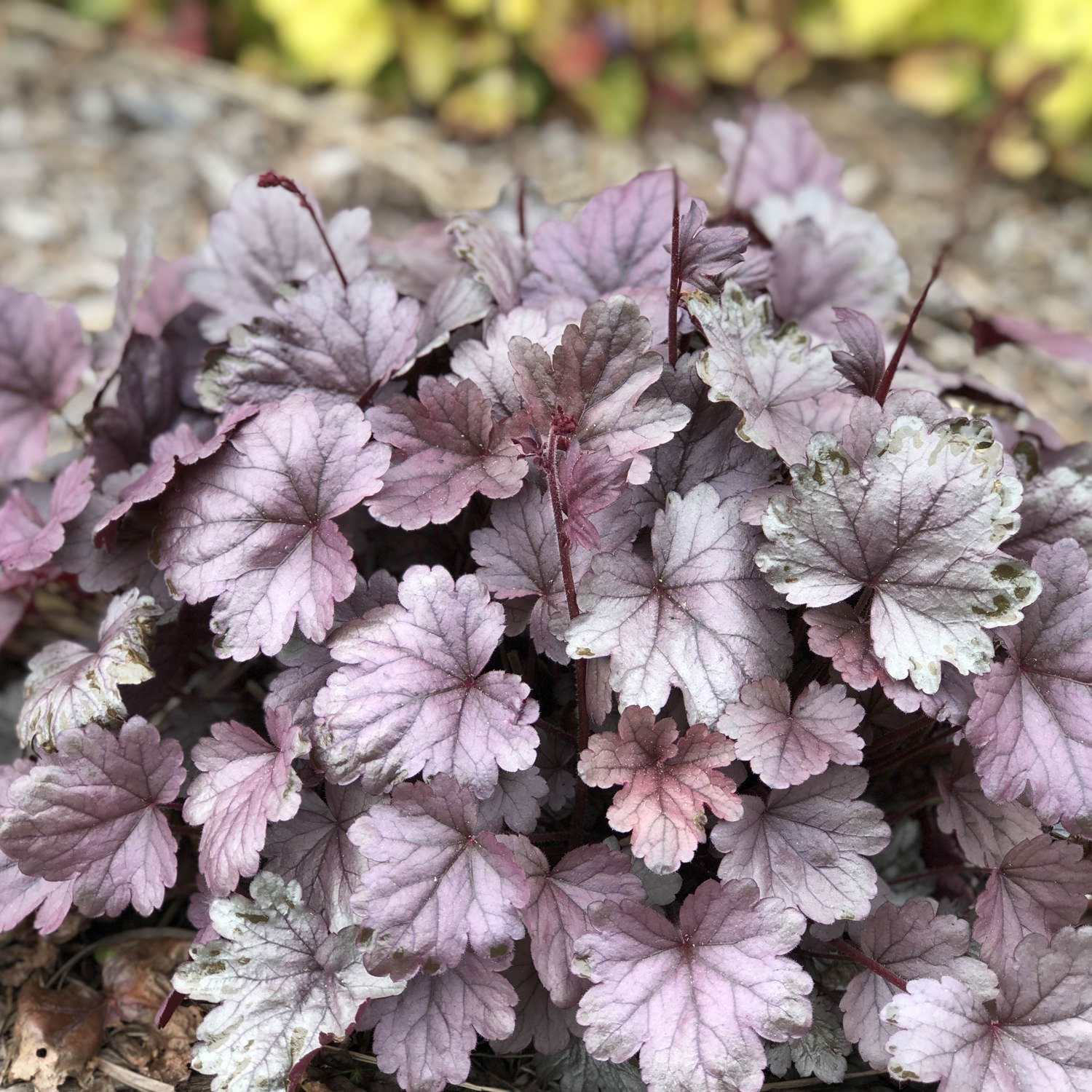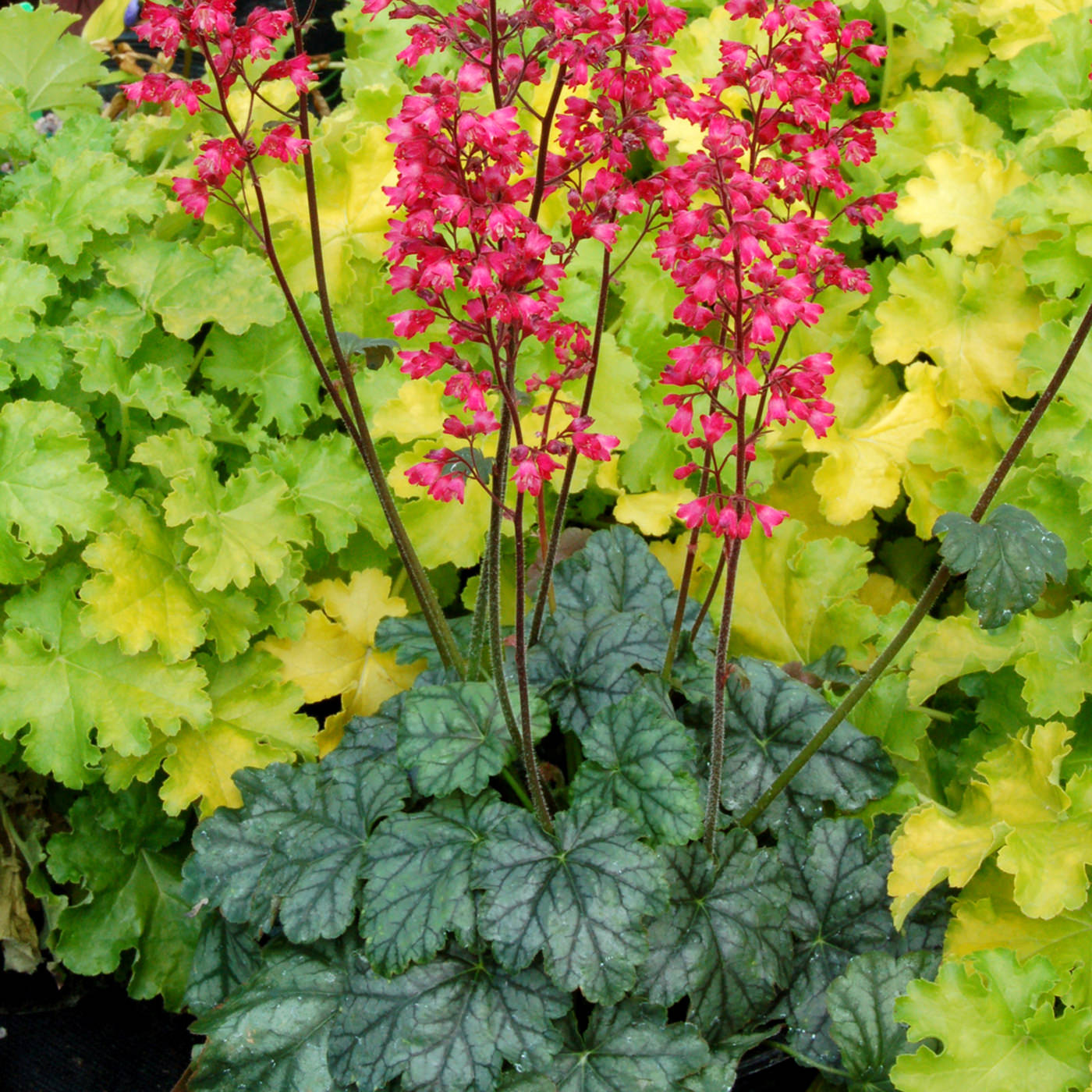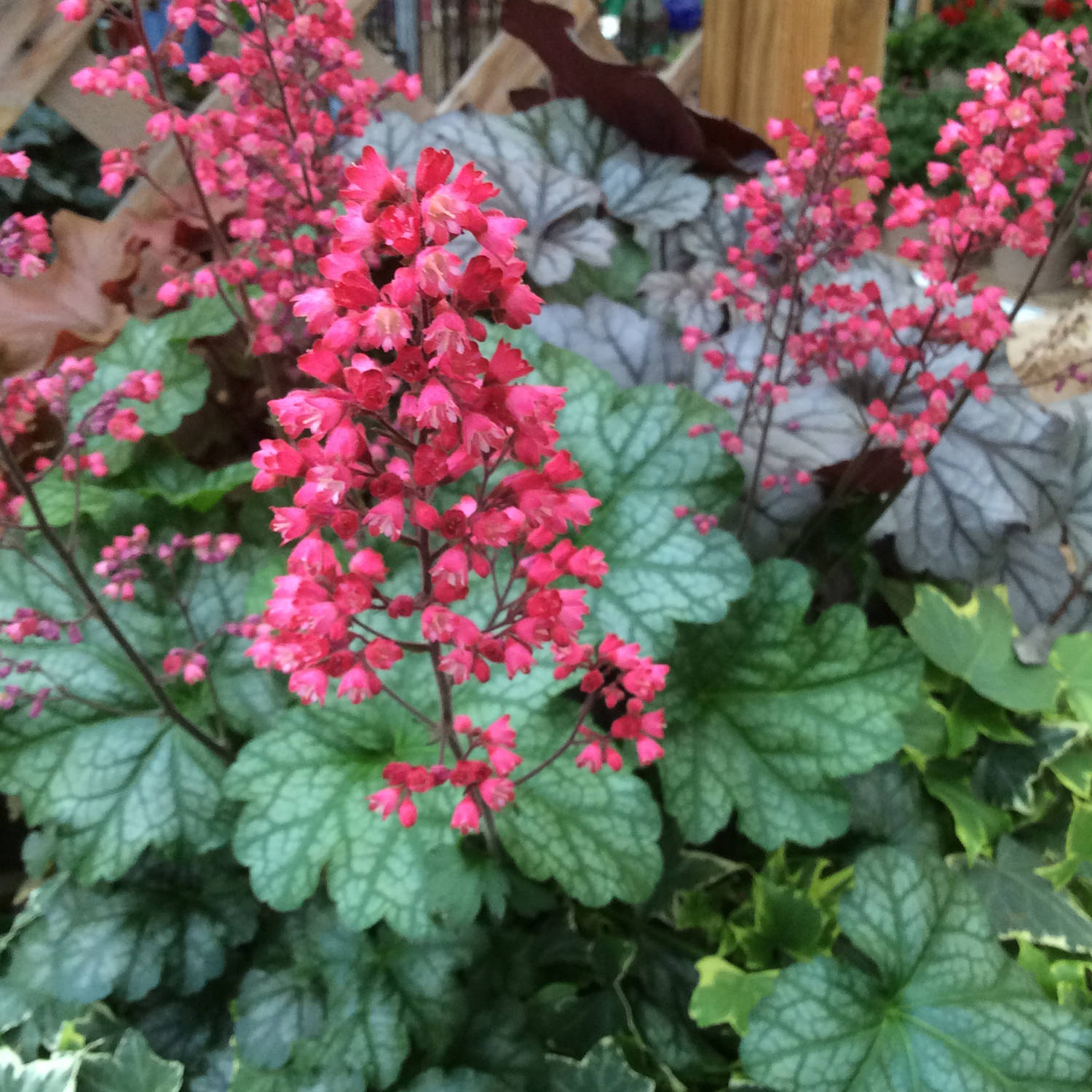Master the Art of Coral Bells (Heuchera): Your Ultimate Growing Guide

The first time I knelt in the dirt with a tray of Coral Bells, I was convinced I’d found the secret ingredient to an enchanting shade border. A gardener down the street had lured me in—her patchwork quilt of radiant Heuchera leaves glowing even on November mornings. Determined to conjure that same magic, I dove in… and promptly made every beginner mistake in the book.

My failures were spectacular: one year, half my new plants vanished into a mushy puddle after an autumn rain; another season they sulked, shrinking rather than expanding, their famous colors dulled to soggy oatmeal. It took trial, error (and a fair bit of stubbornness) before those elusive bursts of color finally became something I could reliably create—and multiply—across my own garden.
If you’re after more than regurgitated advice—the kind that moves beyond “partial shade, water well”—pull up a chair. This master class weaves together hands-dirty experience, careful observation, and lessons passed from gardener to gardener—a real behind-the-gloves guide for taking Coral Bells from daunting mystery to garden showpiece.
Coral Bells (Heuchera): The Master Class Journey From Novice To Garden Maestro
Act One: Meeting Coral Bells For Real
Picture yourself crouching near the woodland’s edge just as sunlight slants through April trees. The ground is dotted with shy clusters of heart-shaped leaves—some frosted silver and green, others burgundy like spilled wine. Native Heucheras have always played these quiet supporting roles in North American forests.
What elevates them? In recent decades breeders have flung open a Pandora’s box of possibilities: ‘Obsidian’ with its black velvet sheen; ‘Marmalade’ glowing coppery-orange; ‘Lime Rickey’ as shocking as lemon zest spilled across dark soil. Suddenly, Coral Bells aren’t background singers—they’re headline acts.
Quickfire Profile:
- Native Roots: North America’s rocky ledges & oak woodlands
- Foliage Spectacle: Chartreuse, cocoa, raspberry-purple—even near-black
- Flower Drama: Delicate wands rise above the leaves midspring-summer
- Modern Marvels: Hundreds of cultivars now outshine wild ancestors
Anecdote:
A friend coaxed me into planting my first ‘Palace Purple’ beneath sugar maples during college. When snow retreated that March, its glossy maroon leaves were the only thing left unscathed—that was the moment I realized this wasn’t just another fussy perennial.
Act Two: Getting The Fundamentals Right (Or How To Avoid My Early Disasters)
Light: Reading Between The Shadows
The classic advice says “partial shade,” but let’s break down what that really means:
- Morning Sun = Happy Plants: East-facing beds are perfect for most Heucheras.
- Afternoon Shade Is Gold: Even tough varieties bleach or crisp if baked by western sun.
- Darker Leaves Handle More Light: Try ‘Obsidian’ or ‘Chocolate Ruffles’ for sun-exposed spots—but even they appreciate regular drinks!
- In Deep South Heat: All bets are off come July; tuck plants where dappled light filters through shrubs or trees.
Story Snippet:
During an August heatwave in 2019—humid enough to feel steam rising from your shoes—I watched my chartreuse-leaved ‘Citronelle’ shrivel overnight beside a concrete path. Lesson? Even tough-looking foliage can fry if shadows disappear at noon.
Soil Wisdom: Where Success Begins
I’ll never forget plunging my trowel into what looked like fluffy topsoil… only to strike dense clay just five inches down—the silent killer of countless Heucheras.
Here’s what actually works:
- Dig at least 12” deep/18” wide per plant.
- Mix in compost plus pine bark fines or sharp grit until soil feels like crumbled chocolate cake—not sticky brownie batter!
- pH between 6–7 is ideal but don’t obsess; Heuchera are forgiving unless you’re on pure limestone or swamp mud.
- Raised beds? Fantastic insurance against soggy feet.
Watering Truths (From Drowned Beginnings)
Fail #1 for newbies? Overwatering—or trusting sprinkler systems set for lawns instead of perennials.
Sensory test: Stick your finger two knuckles deep beside the crown after rain or irrigation. If it feels cool and barely moist—not drip-wet—you’ve nailed it. Water deeply only when top inch dries out; roots dive deeper and anchor better this way.
Feeding & Mulching—Why Less Is More
No need for rocket-fuel fertilizer! Heavy feeding = floppy stems and disappointing foliage colors.
I adopt what an old nurserywoman once called “the compost sandwich”: sprinkle slow-release organic feed at planting; add thin compost topping each spring; finish with a 1–2” layer of shredded bark for moisture management (never touching stems).

Cautionary Note:
Skip chunky mulch directly over crowns—or crown rot will sneak up faster than you can say “what happened?!”
Act Three: From Planting Day Blunders to Flawless Establishment
Let me take you back: On my first attempt at mass planting Heuchera along a shady walk, I dropped each crown about two inches too deep “for stability.” Within months—a stinky mess where roots should have been!
This is how seasoned pros do it:
- Choose stocky young plants with plump crowns and white-tipped roots (avoid root-bound bargains).
- Loosen soil wider than expected—roots love room to travel sideways.
- Set crown fractionally ABOVE soil level—imagine placing a cupcake on a plate so icing stays dry!
- Water gently but thoroughly so soil settles around roots without drowning them.
- Mulch sparingly around—not on—the base.
Spacing decoded:
Crowded beds breed mildew and root rot! For bold effect in borders? Space at least 18” apart. Going for groundcover under trees? Tighter spacing (~12”) works IF airflow remains good and mulching is delicate.
Act Four: Troubleshooting And Mastery Moves
Every mistake you can make—I’ve made twice! Here’s how you sidestep common pitfalls:
Problem 1: Vanishing Plants After Winter
Heuchera are notorious heavers in regions with freeze-thaw cycles (Zone 5 here). If crowns rise free like little potatoes by March…
Pro tip: After deep frost sets in, add extra-light pine needles atop mulch for winter insulation—then clear away promptly come thaw time so new growth isn’t smothered.
Problem 2: Leaf Scorch Or Bleaching
Those lemon-lime varieties glow beautifully… until exposed to hot afternoon rays without respite.
Dialogue Moment:
Neighbor (pointing): Why does yours look emerald while mine’s crunchy brown?
Me (wincing): Have you tried moving them behind some hostas or under that crabapple?
Shifting unhappy plants mid-spring or fall has saved more specimens than any chemical spray ever could!
Problem 3: Pest Patrol
Slugs adore juicy Heuchera bases during rainy weeks (“looks like someone took tiny bites out!”). My fix? Shallow beer traps plus midnight flashlight patrols until local birds catch on!
As for vine weevil larvae—a nematode drench each May/September keeps surprises at bay without harsh pesticides.

Act Five: Advanced Techniques That Turn Growers Into Artists
Ready to graduate beyond survival mode?
Designing Like A Painter
Try this:
- Blend contrasting textures (‘Caramel’ beside sword-like Siberian iris)
- Echo colors through borders (‘Berry Smoothie’ repeating magenta tulips)
- Dot sparkling whites (‘Snow Angel’) among ferns so they gleam at dusk
My favorite trick involves low bowls planted with three Heuchera cultivars plus trailing lamium—all popping against vintage brickwork by my front step when other planters wilt away midsummer heatwaves.
Propagation Secrets (And How Free Plants Changed My Life)
Every few years clumps will look tired—that’s your cue!
Division Method:
Dig up whole clump early spring/fall;
Tease apart natural sections by hand;
Snip dead bits off;
Replant instantly—with crown just above surface—
Water well… then stand back!
By year two you'll wonder why you paid nursery prices for new plants all those seasons before!
(Last time I divided 'Sugar Plum,' one $10 starter became six robust daughters.)
Leaf Cuttings & Seedlings:
For adventurers only! Root healthy leaf petioles dipped in hormone powder under humidity domes—you’ll get variable results but remarkable satisfaction when one takes off.
Seed sowing is delightfully unpredictable—a roll of genetic dice best suited for winter tinkering indoors when dreaming about next spring's combinations.
Bonus Table: Diagnose And Fix Problems Fast
| Issue | Sight/Symptom | Likely Culprit | Remedy |
|---|---|---|---|
| Browning edges/leaves | Crispy leaf tips/margins | Sun scorch | Move/Increase shade |
| Mushy centers/crowns | Soft rot smell/plant collapse | Overwatering/depth | Replant shallower/improve drainage |
| Sparse flowering | Few flowers despite lush growth | Too much nitrogen | Back off on feed/more light |
| Silver coating | Powdery substance | Powdery mildew | Boost air flow/water AM |
| Ejected crowns | Plant lifts from earth post winter | Frost heaving | Add mulch/remove later |
Real-Life Case Studies (Lessons Written In Soil)
Case One:
On assignment years ago designing courtyard gardens in Maine, we ringed benches with interplanted ‘Frosted Violet,’ carex sedge and Japanese painted fern—the combo held strong even when salt-laden winds battered everything else flat by December!
Case Two:
Sarah from zone 8b inherited bone-dry clay beds beneath mature oaks—her Heucheras despaired until she layered decomposed pine bark mixed with mushroom compost six inches thick before replanting deeper-rooted selections (‘Autumn Bride’, especially). Now her woodland walk glows even through punishing southern summers—and yes, she gets hummingbirds zipping through every June evening!
Next-Level Action Plan – What To Do This Week
- Scout your space as daylight changes hour-to-hour; note where sun lingers versus flees.
- Pick one proven Heuchera variety based on YOUR climate/tested above—or splurge on three contrasting ones if feeling bold!
- Prepare soil within reach of rainfall run-off but safe from standing water.
- Plant higher rather than deeper—and celebrate every time those crowns peek proud above mulch!
- Mulch lightly now… protect heavily after freeze-up if winters are rough.
- Mark your calendar now (“Divide clumps spring two years from today!”).
- Snap photos quarterly—you’ll spot successes/failures before memory blurs details.
- Join a forum or local group—trading tips multiplies confidence faster than reading alone ever could!
Epilogue — Your Coral Bell Story Begins Here
If these pages nudge you past hesitation into muddy-handed experiments—with their inevitable stumbles and hard-won triumphs—the transformation has already begun.
Remember this master class isn’t about perfection; it’s about steadily learning what makes your corner thrive—from subtle shifts in shade patterns to which color combos call out long after sunset falls across your beds.
Bookmark this guide—and return whenever questions bubble up mid-season (“Should I divide now?”), or when success feels just out of reach again.
Every patch of dazzling foliage tells its own origin story…and soon enough yours will too.
Happy gardening—from one Coral Bell devotee to another!



